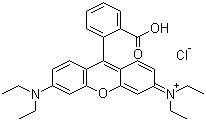Online Database of Chemicals from Around the World
| Simagchem Corporation | China | Inquire | ||
|---|---|---|---|---|
 |
+86 13806087780 | |||
 |
sale@simagchem.com | |||
| Chemical manufacturer since 2002 | ||||
| chemBlink standard supplier since 2008 | ||||
| Dezhou Hongqiao Dyestuff Chemical Co., Ltd. | China | Inquire | ||
|---|---|---|---|---|
 |
+86 (534) 274-5911 | |||
 |
hancuihua@hotmail.com | |||
| Chemical manufacturer | ||||
| chemBlink standard supplier since 2009 | ||||
| Hefei TNJ Chemical Industry Co., Ltd. | China | Inquire | ||
|---|---|---|---|---|
 |
+86 (551) 6541-8684 | |||
 |
sales@tnjchem.com | |||
| Chemical manufacturer since 2001 | ||||
| chemBlink standard supplier since 2010 | ||||
| Winchem Industrial Co., Ltd. | China | Inquire | ||
|---|---|---|---|---|
 |
+86 (574) 8385-1061 | |||
 |
info@win-chemical.com hhp13@hotmail.com | |||
| Chemical manufacturer | ||||
| chemBlink standard supplier since 2010 | ||||
| AAT Bioquest, Inc. | USA | Inquire | ||
|---|---|---|---|---|
 |
+1 (408) 733-1055 | |||
 |
jack@aatbio.com | |||
| Chemical manufacturer since 2005 | ||||
| chemBlink standard supplier since 2010 | ||||
| BOC Sciences | USA | Inquire | ||
|---|---|---|---|---|
 |
+1 (631) 485-4226 | |||
 |
info@bocsci.com | |||
| Chemical manufacturer | ||||
| chemBlink standard supplier since 2010 | ||||
| Wuhan Kemi-works Chemical Co., Ltd. | China | Inquire | ||
|---|---|---|---|---|
 |
+86 (27) 8573-6489 | |||
 |
info@kemiworks.net sales@kemiworks.com | |||
| Chemical manufacturer | ||||
| chemBlink standard supplier since 2011 | ||||
| Jadechem Ningbo Co., Ltd. | China | Inquire | ||
|---|---|---|---|---|
 |
+86 (574) 8907-5960 +86 13777214302 | |||
 |
info@jadechem-colours.com | |||
| Chemical manufacturer since 2008 | ||||
| chemBlink standard supplier since 2012 | ||||
| Classification | Organic raw materials >> Organic phosphine compound |
|---|---|
| Name | Rhodamine B |
| Synonyms | Basic Violet 10; C.I. 45170; 9-(2-Carboxyphenyl)-3,6-bis(diethylamino)xanthylium chloride |
| Molecular Structure |  |
| Molecular Formula | C28H31N2O3.Cl |
| Molecular Weight | 479.02 |
| CAS Registry Number | 81-88-9 |
| EC Number | 201-383-9 |
| SMILES | CCN(CC)C1=CC2=C(C=C1)C(=C3C=CC(=[N+](CC)CC)C=C3O2)C4=CC=CC=C4C(=O)O.[Cl-] |
| Density | 1.31 g/mL |
|---|---|
| Melting point | 210-211 ºC (dec.) |
| Water solubility | Soluble |
| Hazard Symbols |

 GHS05;GHS07 Danger Details
GHS05;GHS07 Danger Details | ||||||||||||||||||||||||||||||||||||||||||||||||||||||||||||||||||||
|---|---|---|---|---|---|---|---|---|---|---|---|---|---|---|---|---|---|---|---|---|---|---|---|---|---|---|---|---|---|---|---|---|---|---|---|---|---|---|---|---|---|---|---|---|---|---|---|---|---|---|---|---|---|---|---|---|---|---|---|---|---|---|---|---|---|---|---|---|---|
| Hazard Statements | H302-H318-H412 Details | ||||||||||||||||||||||||||||||||||||||||||||||||||||||||||||||||||||
| Precautionary Statements | P264-P264+P265-P270-P273-P280-P301+P317-P305+P354+P338-P317-P330-P501 Details | ||||||||||||||||||||||||||||||||||||||||||||||||||||||||||||||||||||
| Hazard Classification | |||||||||||||||||||||||||||||||||||||||||||||||||||||||||||||||||||||
| |||||||||||||||||||||||||||||||||||||||||||||||||||||||||||||||||||||
| SDS | Available | ||||||||||||||||||||||||||||||||||||||||||||||||||||||||||||||||||||
|
Rhodamine B is a synthetic dye that belongs to the rhodamine family and is widely used for its vibrant pink color and fluorescent properties. Discovered in the late 19th century, Rhodamine B was initially synthesized by the German chemist Heinrich Caro in 1883 as a member of the xanthene dye class. The compound is characterized by its molecular formula C28H31ClN2O3 and exhibits strong absorption and emission properties in the visible light spectrum, making it a valuable substance in various applications. One of the primary applications of Rhodamine B is in the textile industry, where it is used as a dye for fabrics, particularly in cotton and wool processing. Its excellent color fastness and ability to impart bright hues make it a popular choice for dyeing materials. In addition to textiles, Rhodamine B is utilized in the paper industry to enhance the brightness of papers and cardboard products. The compound's fluorescent properties also make it useful in the production of fluorescent markers and inks, which are widely employed in printing and packaging. Rhodamine B is not only limited to industrial applications; it also has significant uses in the field of biology and medicine. The dye is commonly used as a tracer in biological and environmental studies due to its fluorescent properties, which allow researchers to track the movement of substances in various systems. In particular, Rhodamine B has been utilized in cell labeling and imaging studies, enabling scientists to visualize cellular processes and structures under fluorescence microscopy. Furthermore, Rhodamine B is frequently employed in analytical chemistry as a fluorescent probe for detecting metal ions, such as lead and copper, in environmental samples. Its sensitivity and specificity for certain metal ions make it a valuable tool for monitoring water quality and environmental pollution. Despite its widespread use, there are concerns regarding the toxicity of Rhodamine B. Studies have indicated that the dye can exhibit mutagenic and carcinogenic properties under certain conditions, raising safety concerns for both humans and the environment. As a result, regulatory agencies in some countries have imposed restrictions on the use of Rhodamine B in food and cosmetic products, prompting researchers to explore safer alternatives. In summary, Rhodamine B is a versatile dye with a wide range of applications in textiles, biology, and analytical chemistry. Its discovery in the 19th century has paved the way for various industrial and scientific advancements. However, the potential health and environmental risks associated with its use highlight the need for careful handling and consideration of alternative substances in certain applications. References 2010. Rhodamine-based chemosensor for Hg(2+) in aqueous solution with a broad pH range and its application in live cell imaging. Organic & Biomolecular Chemistry, 8(4). DOI: 10.1039/c0ob00013b 2010. A Rhodamine-Based Off-On Fluorescent Chemosensor for Selectively Sensing Cu(II) in Aqueous Solution. Journal of Fluorescence, 20(5). DOI: 10.1007/s10895-010-0698-x 2008. Development of in vitro tooth staining model and usage of catalysts to elevate the effectiveness of tooth bleaching. Dental materials : official publication of the Academy of Dental Materials, 24(1). DOI: 10.1016/j.dental.2007.01.012 |
| Market Analysis Reports |
| List of Reports Available for Rhodamine B |